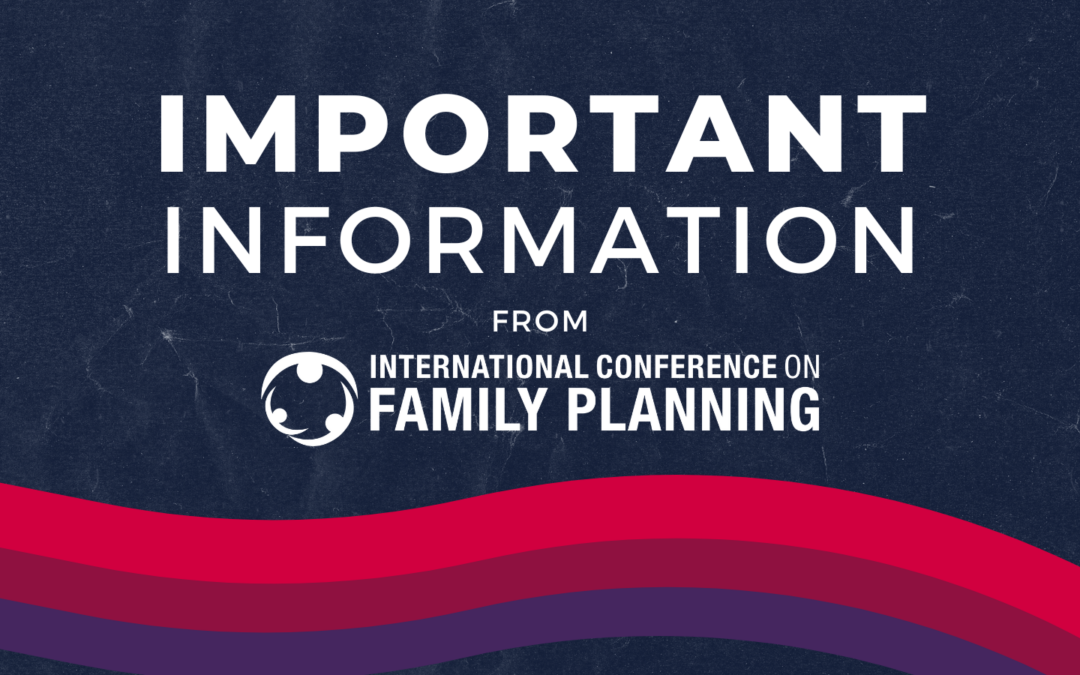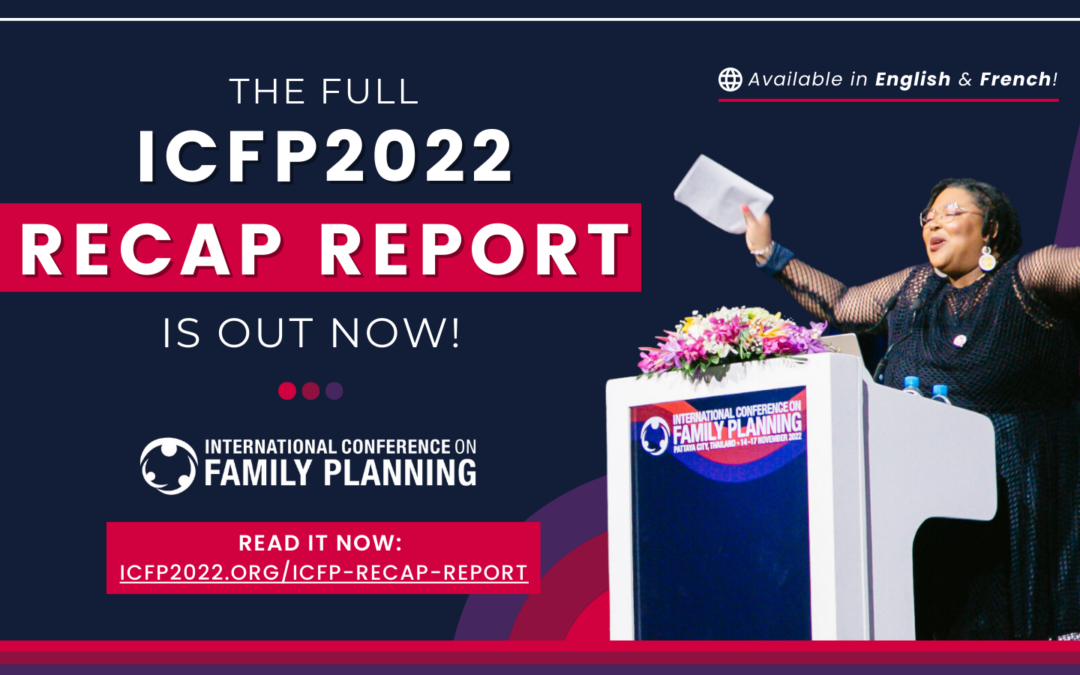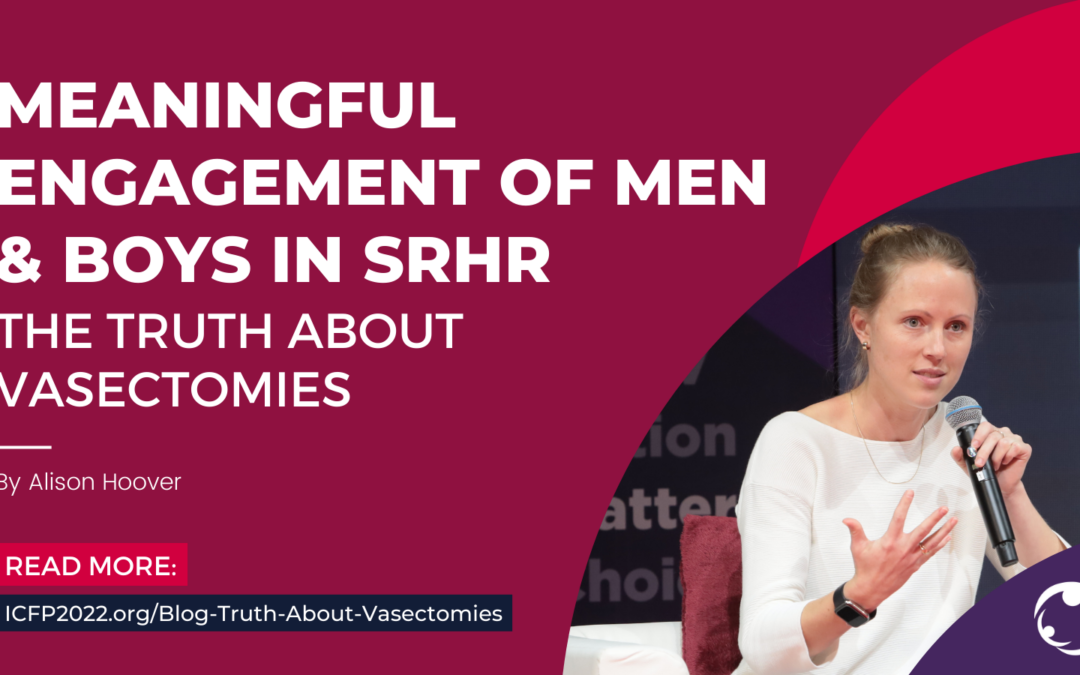By Jessica Heinzelman. Originally posted on www.medium.com.
Since day one, our vision has been for askNivi to be a service that people across the world turn to find accurate, non-judgmental, actionable health information of all types.
To date, we’ve engaged 1.7 million people in Kenya and India on sexual reproductive health topics through FB Messenger, WhatsApp, and SMS. With the spread of the coronavirus to nearly every country and a spike in misinformation, we saw the opportunity to put the Nivi platform to work supporting the global response.
Building from our existing platform, we’ve focused our coronavirus response around a two key areas:
1) Promoting awareness and responsible behavior at scale
2) Enabling data-driven response
We are running social media campaigns on Facebook Messenger that link users to the askNivi chatbot that provides actionable guidance. Unlike a human-staffed hotline, askNivi can serve hundreds of thousands of users at one time, any time of the day. Every conversation a user engages in generates data and insights that reveals trends and can inform on- and offline responses (messaging, targeting, supply chain, training, etc.) as the situation changes.
Here’s how it works…
#1 A person sees an ad in their Facebook feed.
In the first 24 hours in Kenya, our 6 ads reached 260,930 unique people (reach is how many people had an askNivi COVID ad appear in their feed). Approximately 3% clicked on the ad.
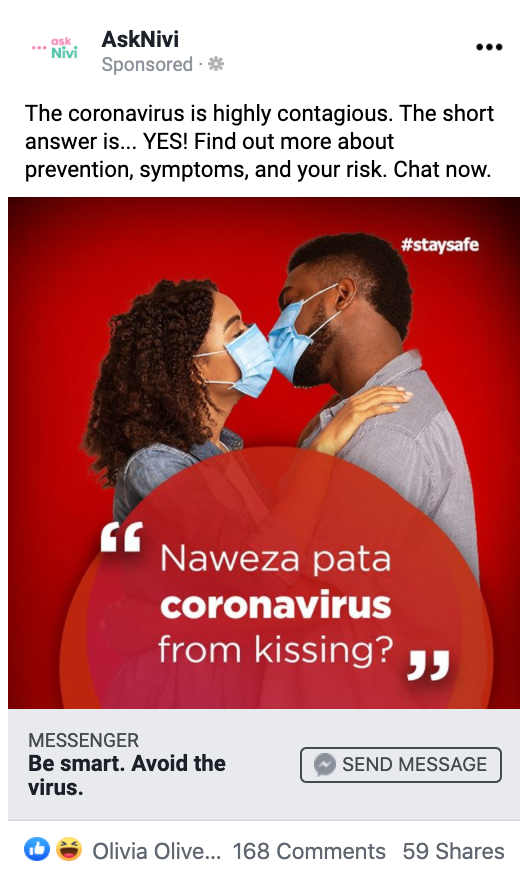
Coronavirus-related ads also had a very high share rate. The above ad on kissing was shared 59 times in the first 24 hours, 123 times in the first 48 hours!
#2 The ad opens up a Messenger chat that acknowledges the users’ interest and collects demographic information.
Each ad has a custom welcome message that creates a bridge between the campaign message and the askNivi chat. New users are asked a few questions about language preference, age, gender, and location. Returning users go right into the chat.
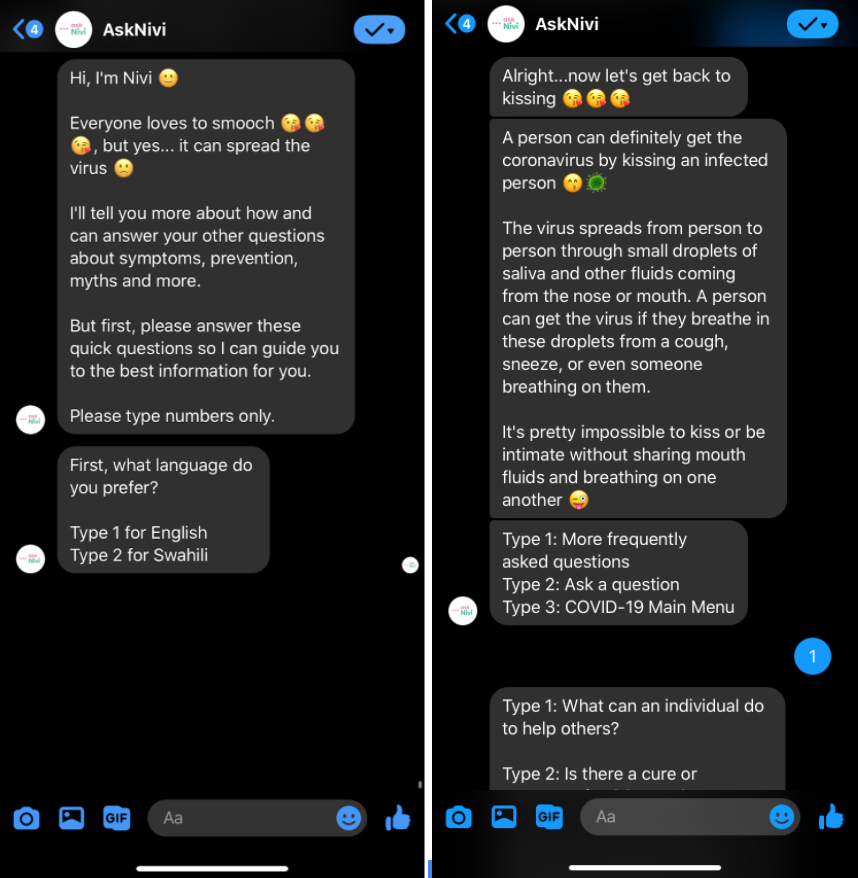
By collecting demographic data, we are able to see who we are reaching with what messages, and disaggregate analysis to better inform response. We expect the demographics to change over time as we adjust our targeting, but initially we saw greater engagement among men and urban populations.

#3 Users get their answers, explore other topics that promote positive individual behaviors, and generate population-level insights.
All askNivi conversational content is adapted from World Health Organization (WHO) guidelines. The first iteration of these conversations collects 38+ data points about coronavirus-related knowledge, attitudes, behaviors, exposure and symptoms through askNivi’s initial conversations.
Users can also submit a questions not currently answered and we’ll expand answers as we see topics rise in demand.
In the first 48 hours we saw 948 unique users engage in conversations! Conversations linked to ads (i.e. prevention, symptoms, and kissing) were most accessed, but all conversations were accessed!
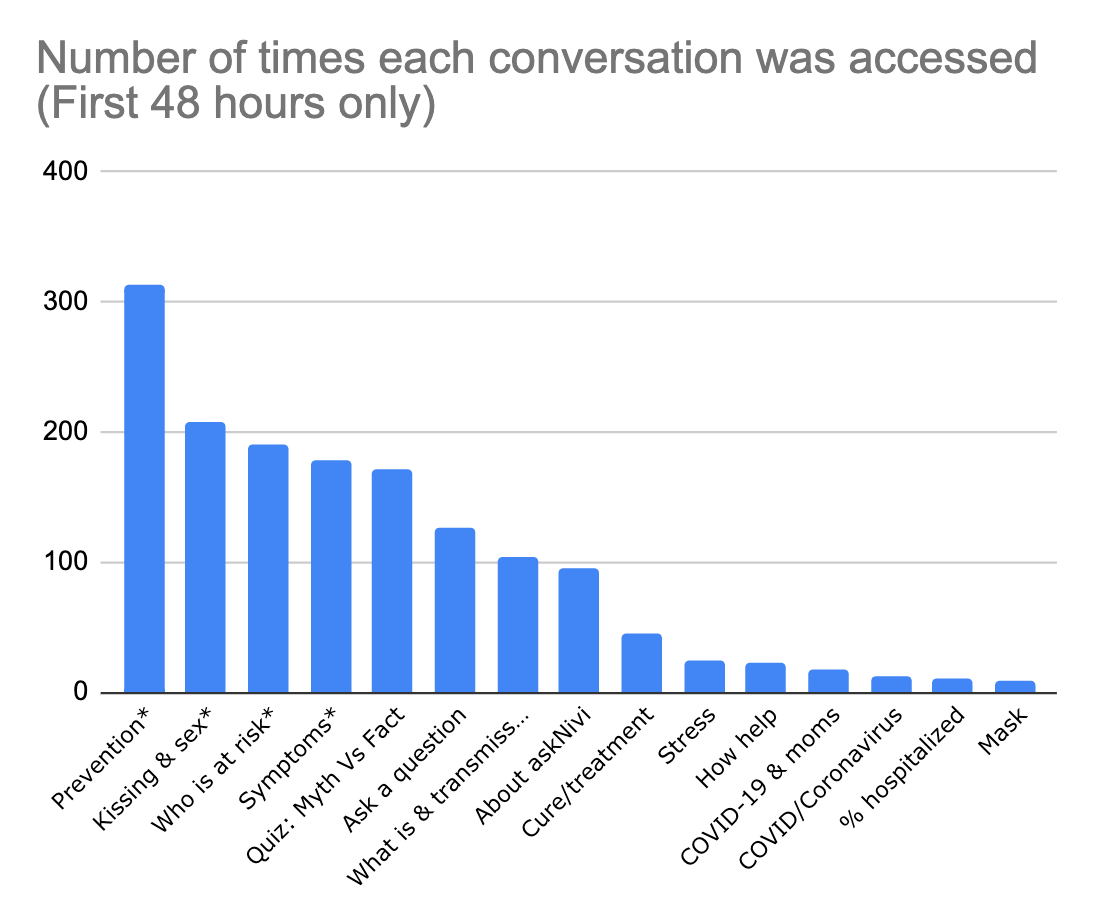
Some examples of how these conversations work…
COVID-19 Symptoms Conversation: The COVID-19 Symptoms conversation educates about common symptoms and prevalence and exposure. Those that indicate they are experiencing symptoms and risk of exposure are encouraged to call a medical provider or relevant government hotline.
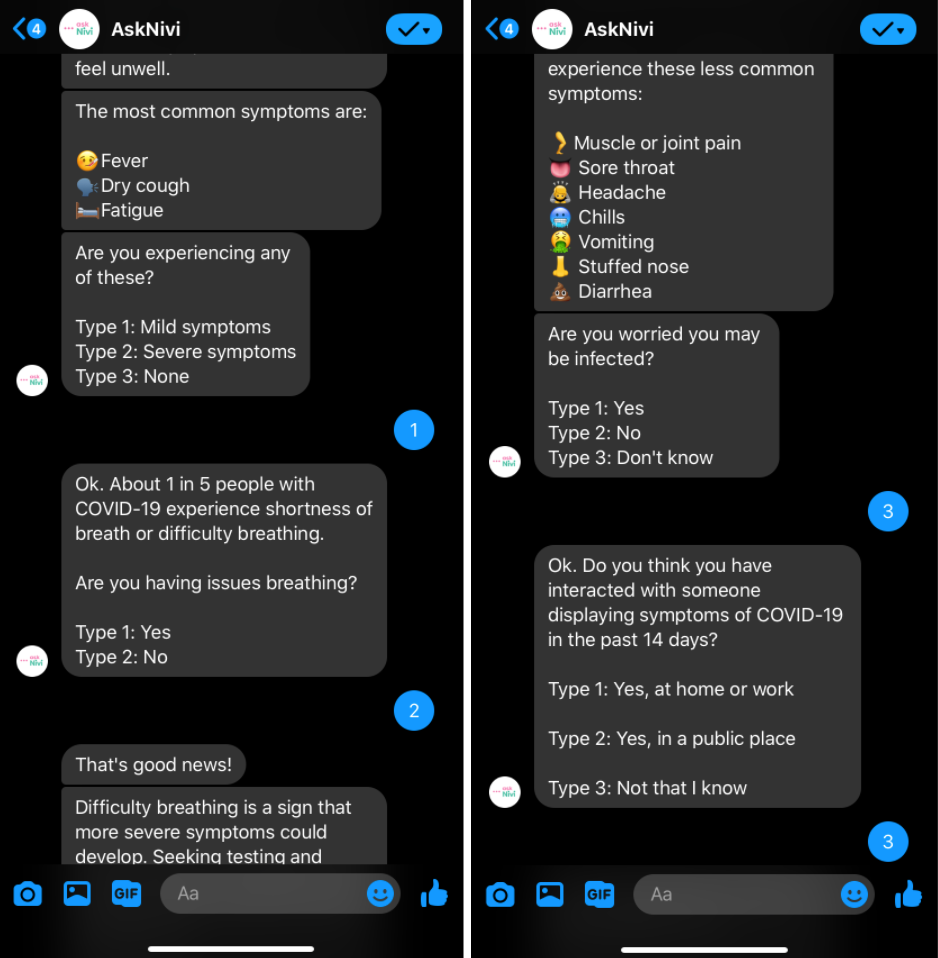
Data generated from the symptoms conversation generated data on prevalence of symptoms and perceived concern.

As user numbers grow, we’ll be able to more accurately see differences between demographic groups. For instance, early results show a lower percentage concern of being infected in rural areas (Note: Early numbers illustrate Nivi’s potential— we’ll publish robust findings in the coming weeks as user numbers grow).

COVID-19 Quiz: askNivi’s COVID-19 Quiz provides a fun way to engage users while gathering insight into the most prevalent myths and misconceptions. Both correct and incorrect answers are followed by messages that reinforce the truth.

Nivi’s Myth Vs Fact quiz allows us to gauge levels of misinformation that can inform Nivi conversations as well as public campaigns. Do you have a myth you want to test? Write us!!

Next up from Nivi…
Next week we are launching these same conversations in India. Over the coming weeks we’ll be releasing some of our findings from our COVID-19 conversations, as well as the results from a “pulse survey” we are taking among cohorts of existing users. To get the latest on Nivi’s COVID-19 efforts, follow us on Medium or email Partnerships@nivi.io with subject line “Subscribe.”
Additionally, we are actively seeking organization that would like to work with us to integrate askNivi into their response in Kenya, India, and globally. Contact Partnerships@nivi.io!



